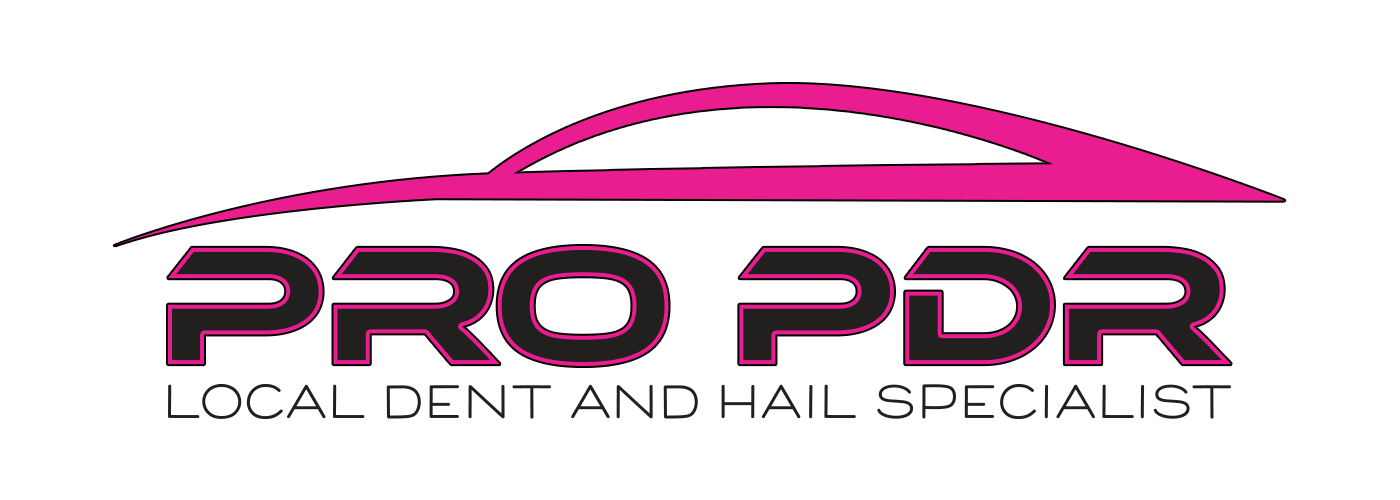Whether it’s a surprise door ding in a parking lot or your vehicle just survived another Colorado hailstorm, dents are an unfortunate reality for many car owners in Colorado Springs. But before you head to a body shop for an expensive repair and a new coat of paint, there’s a better solution you should know about: Paintless Dent Repair (PDR).
In this guide, we’ll walk you through how paintless dent repair works, why it’s one of the most effective and eco-friendly solutions for dent removal, and what local drivers need to consider when choosing a technician. Let’s dive into this step-by-step breakdown of the paintless dent repair process.
What Is Paintless Dent Repair?
Paintless Dent Repair (PDR)is a non-invasive dent removal techniquethat restores your vehicle’s body without the need for sanding, fillers, or repainting. Instead of covering up the damage, PDR works by gently reshaping the metal from behind the panel, allowing technicians to return your vehicle to its original condition while preserving the factory paint finish.
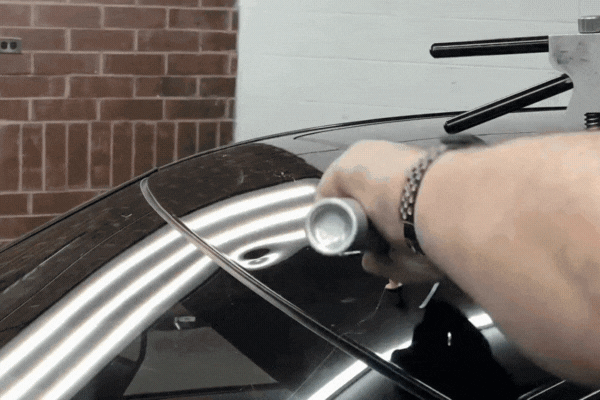
PDR is ideal for:
- Hail dent restoration
- Small to medium door dings
- Shopping cart or minor impact damage
- Creases and shallow bodyline dents, depending on accessibility
This method is faster, more cost-effective, and eco-friendlycompared to traditional dent repair. Since it avoids harsh chemicals and paint materials, it’s a sustainable option that helps maintain your car’s resale value. Best of all, there’s no risk of mismatched paint, a common issue with conventional repairs.
It’s no surprise more drivers in Colorado Springs are choosing trusted specialists like Professional PDR, a veteran-founded, mobile dent repair serviceknown for quick turnarounds, insurance-friendly repairs, and unmatched attention to detail.
The Paintless Dent Repair Process: Step-by-Step
Understanding how paintless dent repair workshelps you make informed decisions when your car needs attention. Here’s how experts like those at Professional PDR’s service teamapproach each job:
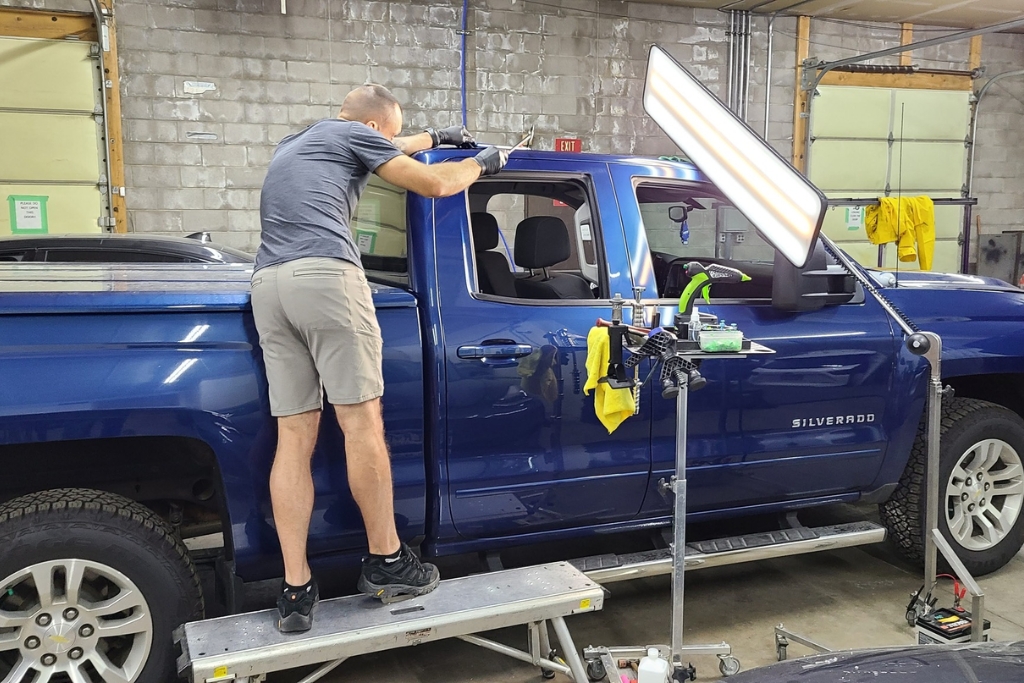
1. Initial Assessment & Light Reflection Evaluation
The process begins with a thorough inspection. Technicians use specialized lights to identify the dent’s depth, spread, and contours a critical step called light reflection assessment. This helps pinpoint the exact pressure points and confirms whether PDR is suitable for your damage.
2. Panel Access & Disassembly
To reshape the metal, technicians need to access the back of the dented area. This may involve removing access panels, such as inner door panels, headliners, or wheel liners.
Why does accessing the back of the panel matter for PDR?
Because PDR relies on pushing the dent from behind, access is crucial. Without it, technicians can’t use their tools effectively.
3. Dent Manipulation Using PDR Tools
With access secured, technicians use rods and body picksto gently massage the dented metal back into shape. For surface-level dents where back access isn’t possible, the glue-pull techniqueis used. In this method, special tabs are glued to the exterior and gently pulled outward.
To smooth high spots and ensure a flawless blend, high-spot tappingand finish blendingtechniques are used.
Why are specialized rods and lights essential in dent removal?
They provide the precision and visibility needed to restore the panel without overcorrecting or damaging the paint.
4. Heat-Assisted Repair for Aluminum Panels
Aluminum panels are more rigid than steel, so technicians often use heat-assisted repairto soften the metal. This helps prevent cracking the paint and allows for smoother dent manipulation.
Why is heat sometimes used during paintless dent repair?
It makes the metal more malleable, especially on aluminum, and reduces stress on the panel.
5. Final Touches & Quality Check
After reshaping, technicians inspect the surface again under lights, ensuring the area is fully restored. The result? A clean, seamless finish that looks as good as new with no paint or fillers required.
Benefits of Paintless Dent Repair
When done correctly, Paintless Dent Repair (PDR)provides a range of powerful advantages that go beyond just fixing a dent:
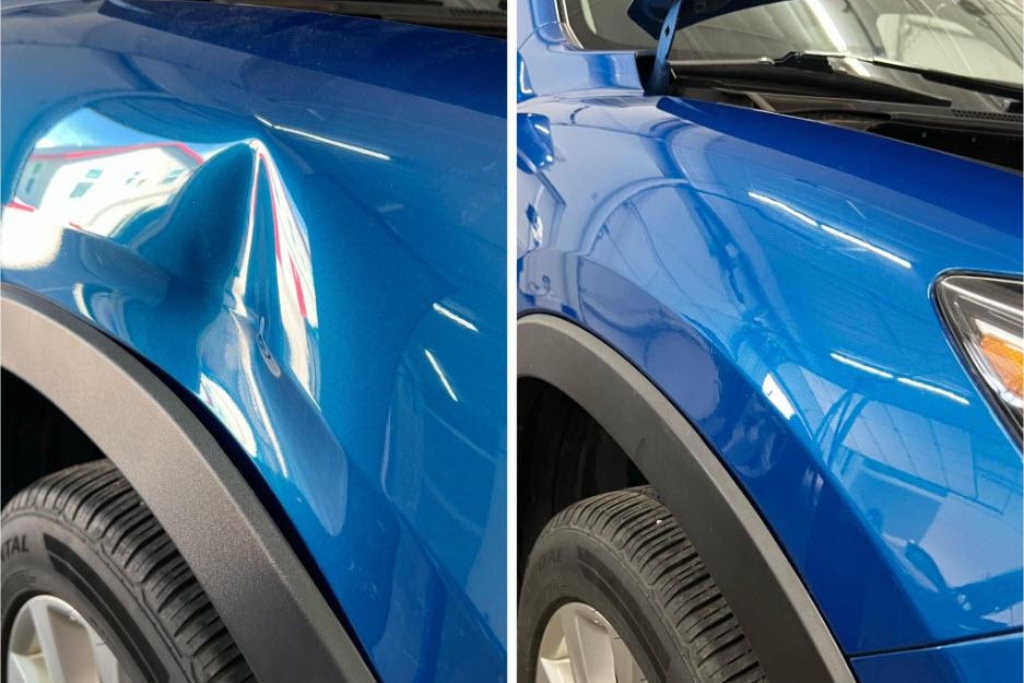
✅ Preserves your vehicle’s original paint– No sanding, fillers, or repainting needed, which means your factory finish stays intact.
✅ Boosts vehicle resale value– Maintaining the OEM condition without paintwork keeps your vehicle looking original and more appealing to future buyers.
✅ Quick turnaround times– Most PDR jobs can be completed in a few hours, with some even done on the same day.
✅ Eco-friendly auto repair– PDR avoids chemical fillers and paint sprays, making it a cleaner, greener solution.
✅ More affordable than traditional repairs– Because there are fewer materials and less labor involved, PDR usually costs significantly less than body shop work.
✅ No risk of mismatched paint– Since no new paint is applied, you avoid the common issue of visible color differences.
✅ Insurance-friendly– PDR is widely accepted by insurance companies, especially for hail damage claims, often speeding up the approval process.
For dents caused by hail, car doors, or minor collisions, PDR in Colorado Springsis a proven, long-term solution. And withProfessional PDR’s mobile repair services, you don’t even need to leave your driveway to get expert service on your terms.
How Much Does Paintless Dent Repair Cost?

How much do they charge per dent for paintless dent repair?
In Colorado Springs, the cost of Paintless Dent Repair (PDR)typically ranges from$75 to $200 per dent. Pricing depends on several factors, including:
- Size and depthof the dent
- Locationon the vehicle (roof, hood, or near panel edges
- Materialof the panel (aluminum repairs often require more effort)
- Accessibilitywhether interior panels need to be removed
For hail damage repair, where there may be dozens or even hundreds of dents, total costs can range from $500 to over $2,500, depending on severity. Fortunately, most comprehensive auto insurance policies cover hail damage and Professional PDRworks directly with insurers to streamline the claims process and reduce out-of-pocket costs.
Their team also provides free estimates, so you’ll know exactly what to expect before any work begins.
PDR vs. Traditional Dent Repair
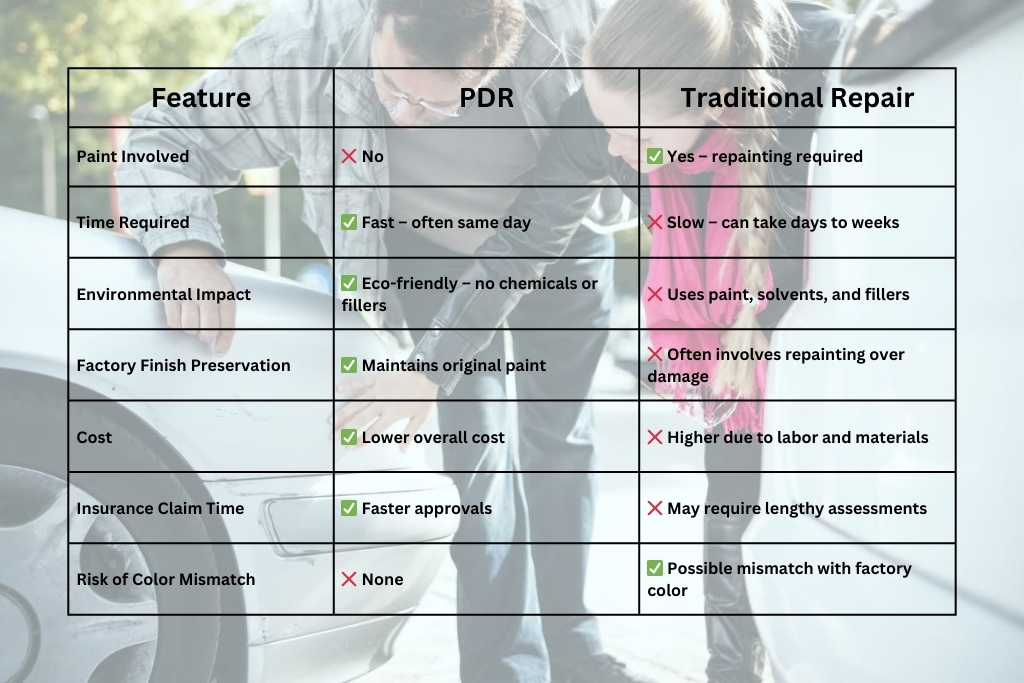
While traditional dent repairstill has its place especially for severe damage, deep creases, or when paint is cracked or chipped, it’s a more invasive, costly, and time-consuming process. It typically involves sanding, body filler application, repainting, and blending, all of which increase both repair time and the likelihood of paint inconsistencies.
Paintless Dent Repair, on the other hand, is ideal for minor to moderate dentswhere the paint surface is still intact. It allows your vehicle to retain its original paint job and value, all while saving you time and money.
For Colorado Springs drivers dealing with hail damage or everyday dings, PDR is often the smarter, more efficient choice, especially when performed by trusted professionals like Professional PDR.
Is PDR Right for Every Dent?
Paintless Dent Repair (PDR)is highly effective for many common dents, but it’s not a one-size-fits-all solution. PDR is most successful when:
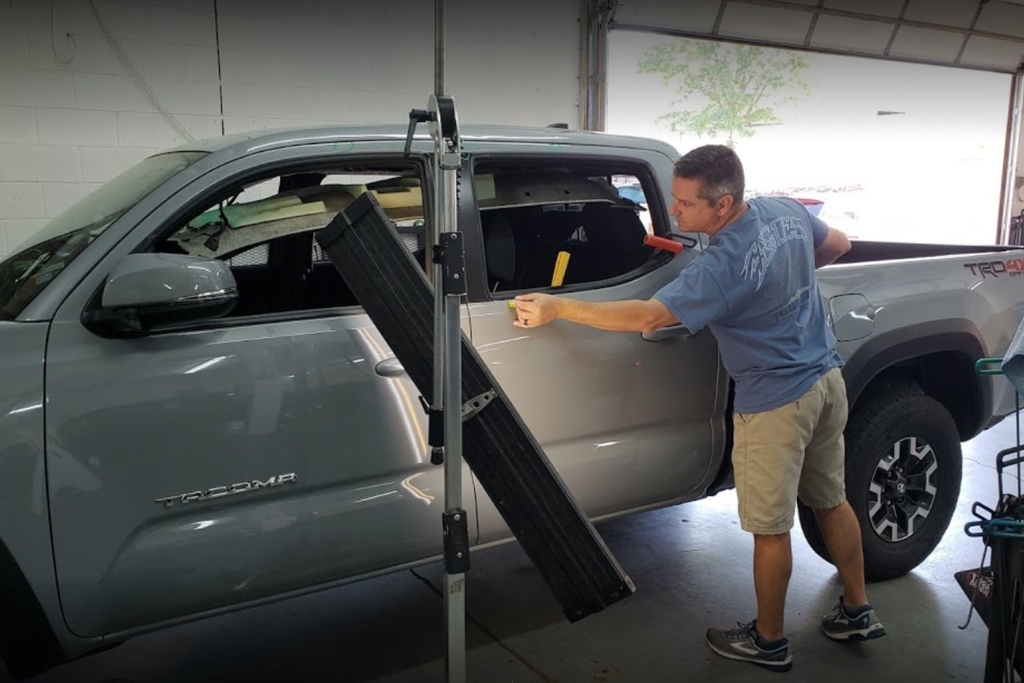
- ✅ The paint is intactand not chipped or cracked
- ✅ The dent isn’t located on the edge of a panel, where metal is reinforced and harder to manipulate
- ✅ Technicians can access the back sideof the dent for tool insertion
What are the disadvantages of paintless dent repair?
PDR isn’t suitable for all types of damage. It can’t fix sharp creases, deep collision damage, or dents with cracked paint. It also becomes more difficult on:
- Complex body lines
- Tight panel corners
- Aluminum panelswith limited flexibility
- Areas with double-wall reinforcement, which restrict tool access
In these cases, traditional body shop repairsmay be necessary, especially if repainting or body filler is required to fully restore the vehicle.
Still not sure if PDR is the right option? Professional PDR offers free, no-obligation assessmentsto evaluate your vehicle’s damage. Their experienced team can recommend the best course of action based on your specific situation saving you time, money, and guesswork.
Choosing the Right PDR Technician in Colorado Springs
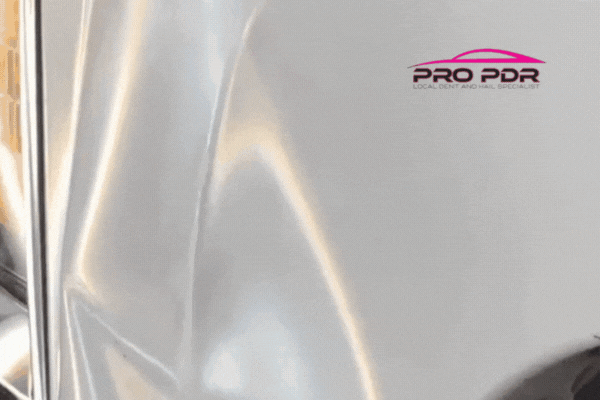
Not all dent repair services are created equal. To ensure top-quality results, make sure your PDR technicianoffers the right blend of experience, tools, and customer service. Here’s what to look for:
✅ Years of hands-on experiencewith advanced PDR techniques
✅ Specialization in hail damage repair, especially important in Colorado Springs
✅ Mobile service availabilityfor on-site convenience
✅ Verified customer reviewsand a strong local reputation
✅ Insurance claim support, including paperwork and direct communication with providers
✅ Clear estimates and upfront pricingwith no surprises
It also helps to choose a provider who invests in modern tools and continues to train with the latest PDR tools and methods.
Professional PDRticks all the boxes. As a veteran-founded business, they bring discipline, precision, and pride to every repair. Their team also offers complementary services like ceramic coatings, detailing, window tinting, and clear bra installations, making them a trusted one-stop shopfor protecting and enhancing your vehicle’s exterior.
Why Paintless Dent Repair Is Smart, Sustainable & Cost-Effective
So, how does paintless dent repair work? It’s a refined, precise process of reshaping your car’s metal panels from behind without ever touching the paint. For Colorado Springs drivers dealing with dings, dents, or hail damage, it’s a smart, sustainable, and cost-effective solution.
If you’re looking for trusted, veteran-founded expertise in PDR in Colorado Springs,Professional PDRoffers mobile service, fast turnaround times, and expert technicians who genuinely care about your car’s appearance and value.
Frequently Asked Questions
What is the job description of a paintless dent repair technician?
They assess vehicle damage, gain panel access, reshape metal using specialized tools, and perform quality control to restore the car’s exterior all without paint or filler.
How hard is it to learn paintless dent repair?
PDR requires precision, patience, and proper training. Mastery comes from practice and understanding vehicle construction and material behavior.
Why does panel type affect the complexity of PDR?
Some vehicles use aluminum or double-walled steel, which are harder to manipulate and may require heat-assisted repairor longer work time.
Pro PDR - Paintless Dent Repair Colorado Springs - Hail Damage Repair
Address:
949 Elkton Dr Suite A, Colorado Springs, CO 80907
Phone:
(719) 574-5678
Google Reviews
Reviews from the web



